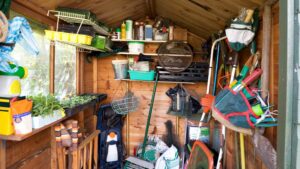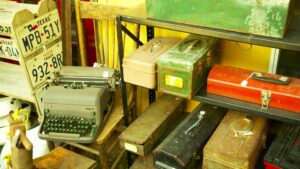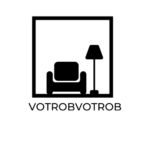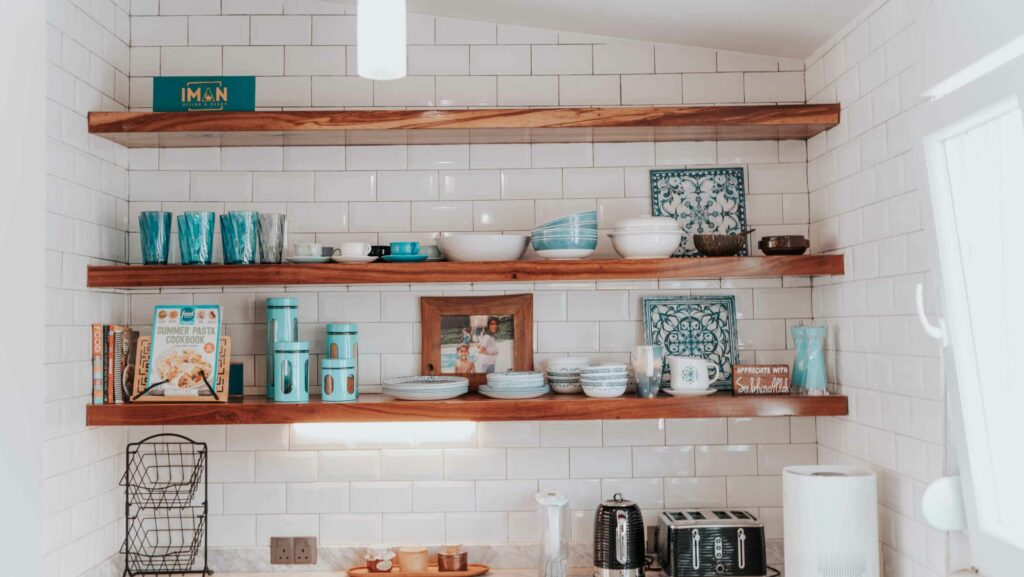Maximizing storage space in a shed can transform a cluttered catchall into an organized oasis. For many homeowners, the challenge isn’t just about storing tools and equipment but doing so in a way that optimizes space and preserves ease of access. DIY shed shelving ideas are a fantastic solution, offering customizable and cost-effective options to elevate the functionality of any shed.
From simple wooden shelves to creative uses of hooks and bins, the possibilities are endless. These shelving solutions not only help in organizing garden tools, paint supplies, and outdoor gear but also make it easier to find what you need without digging through a disorganized pile. Whether you’re a seasoned DIYer or a novice looking to enhance your space, exploring different shelving ideas can lead to not only a more efficient shed but also a more enjoyable workspace.
Diy Shed Shelving Ideas
 Evaluating the size of the shed determines the scale and design of the shelving to be installed. A small shed benefits from vertical shelving solutions, maximizing vertical space without overcrowding the floor area. For larger sheds, one can consider deeper, more robust shelving units that can accommodate heavier items. Measuring the dimensions—height, width, and depth—provides a clear framework for what types of shelves fit best. Storage needs vary depending on the items to be stored. Tools, gardening equipment, and seasonal items call for different shelving designs. For frequent-use items, open shelves offer easy access, while less frequently used items can be stored on higher or deeper shelves. Categorizing items into groups, such as tools, sports equipment, and holiday decorations, helps in creating a shelving plan that matches the usage patterns and ensures optimal organization.
Evaluating the size of the shed determines the scale and design of the shelving to be installed. A small shed benefits from vertical shelving solutions, maximizing vertical space without overcrowding the floor area. For larger sheds, one can consider deeper, more robust shelving units that can accommodate heavier items. Measuring the dimensions—height, width, and depth—provides a clear framework for what types of shelves fit best. Storage needs vary depending on the items to be stored. Tools, gardening equipment, and seasonal items call for different shelving designs. For frequent-use items, open shelves offer easy access, while less frequently used items can be stored on higher or deeper shelves. Categorizing items into groups, such as tools, sports equipment, and holiday decorations, helps in creating a shelving plan that matches the usage patterns and ensures optimal organization.
Materials and Tools for DIY Shed Shelving
 Selecting appropriate materials for DIY shed shelving enhances durability and functionality. Wood, metal, and plastic each offer distinct advantages based on the shed’s environment and the weight of the stored items. For sheds exposed to moisture or outdoor elements, pressure-treated wood or metal shelving systems resist warping and rust. Examples of suitable wood types include plywood and solid pine, both known for their sturdiness and ease of customization. Metal options, such as aluminum or steel, provide exceptional strength and are ideal for heavy-duty storage needs. Plastic shelves offer a lightweight and cost-effective alternative, though they best suit lighter loads and less demanding conditions.
Selecting appropriate materials for DIY shed shelving enhances durability and functionality. Wood, metal, and plastic each offer distinct advantages based on the shed’s environment and the weight of the stored items. For sheds exposed to moisture or outdoor elements, pressure-treated wood or metal shelving systems resist warping and rust. Examples of suitable wood types include plywood and solid pine, both known for their sturdiness and ease of customization. Metal options, such as aluminum or steel, provide exceptional strength and are ideal for heavy-duty storage needs. Plastic shelves offer a lightweight and cost-effective alternative, though they best suit lighter loads and less demanding conditions.
Depending on the materials chosen, one might also require specific tools. For instance, metal shelving units might necessitate a wrench for bolted connections. An accurate list of tools prepares DIYers for a smooth installation process, resulting in robust, well-aligned shelving.
Popular DIY Shed Shelving Ideas
 Free-standing and wall-mounted shelves offer distinct benefits for shed organization. Free-standing shelves stand independently and can be moved or repositioned easily, making them ideal for sheds undergoing frequent changes in stored items. They’re suited for holding heavier loads such as large power tools and bulky equipment, provided their structure is robust enough to prevent tipping. On the contrary, wall-mounted shelves save floor space and help manage lighter items. They make excellent use of vertical space and can be installed at various heights to accommodate different item sizes. Using wall anchors and brackets ensures these shelves remain secure against the shed walls, making them reliable even in areas prone to movement or vibration.
Free-standing and wall-mounted shelves offer distinct benefits for shed organization. Free-standing shelves stand independently and can be moved or repositioned easily, making them ideal for sheds undergoing frequent changes in stored items. They’re suited for holding heavier loads such as large power tools and bulky equipment, provided their structure is robust enough to prevent tipping. On the contrary, wall-mounted shelves save floor space and help manage lighter items. They make excellent use of vertical space and can be installed at various heights to accommodate different item sizes. Using wall anchors and brackets ensures these shelves remain secure against the shed walls, making them reliable even in areas prone to movement or vibration.
Maximizing corner spaces and shelf depths enhances storage efficiency in sheds. Corner shelves are an excellent way to utilize often overlooked spaces, making them a smart addition to both small and large sheds. They can be designed to fit snugly against both walls, providing a unique storage solution for gardening tools and equipment. As for shelf depth, deeper shelves are perfect for storing bulky items and can double as workspaces for potting plants or repairing tools if stability is ensured. Conversely, installing shallow, stepped shelving helps in keeping smaller items visible and accessible, which improves functionality and reduces clutter. This strategic use of shelving configurations aids in maintaining an organized and efficient shed environment.

